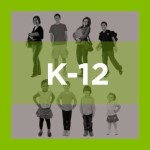There is a heated debate going on about school discipline reform around the country, and lines of argument generally fall into one of two buckets:
On the one hand, advocates of discipline reform point to data that show that students of color and students with disabilities are suspended and expelled at much higher rates than their white, non-disabled peers. The argument goes that this is one of the touchpoints of the school-to-prison pipeline, because research shows that students who experience suspensions or expulsions are far more likely to drop out of school and have continued contact with the criminal justice system. We should be supporting all students and preventing discrimination at every turn by providing them with more support and more opportunities to succeed — not by removing them from the learning environment, right?
On the other hand, critics of discipline reform say that banning and restricting suspensions and expulsions could make our schools less safe and take away the limited options educators already have for addressing student misbehavior. Additionally, they point to the idea that discipline policies are not necessarily discriminatory simply because suspension and expulsion rates are different. Put another way, as long as disciplinary cases are being treated the same regardless of race, the policies are not discriminatory. We shouldn’t remove the suspension/expulsion tool from educators’ proverbial toolbox, if — at worst — a student is dangerous, and — at best — a student is detracting from the learning experience of other students, right?
Now, the U.S. Department of Education has signaled its intent to re-consider Obama-era guidance on school discipline, fanning the already fiery discussion. Meanwhile, several state policymakers have taken action to address disciplinary disparities in their state and to institute alternative disciplinary strategies.
We recently released Policy Snapshots on suspension and expulsion and alternative discipline strategies, outlining state action on both of these topics. In 2017, at least 18 states proposed legislation related to suspension and expulsion, and nine bills were enacted. Generally, these efforts address the following:
- Restricting suspension and expulsion by grade level and type of infraction.
- Limiting the length of exclusion.
- Implementing reporting requirements.
- Supporting student re-engagement.
In addition, many states have started to require the use of more supportive school discipline alternatives like restorative justice techniques, positive behavioral supports and interventions, and trauma-informed practices. Usually, states require that schools use these techniques first, before gradually moving toward more punitive measures. At least 12 states, plus the District of Columbia, also proposed bills in 2017, attempting to institute some of these strategies. Those bills included:
- Implementing professional development and training programs for teachers, administrators, school resource officers and other school personnel.
- Establishing committees to study alternatives to punitive and exclusionary discipline.
- Requiring the use of restorative practices, positive behavioral interventions, trauma-informed school strategies and others.
In addition to disciplinary alternatives, it is important to consider the context within which these reform efforts are taking place. A group of experts debated this issue recently at the Fordham Institute, citing some factors that may contribute to more successful reform efforts — including smart classroom management; a culture of high expectations; increased student and teacher support; and a comprehensive, proactive response system.
While it is difficult to say how the debate on school discipline reform will shake out — and even more difficult to say how federal actions on the topic will influence state leaders — it is clear that many states are focusing on creating positive school environments that serve all students.










